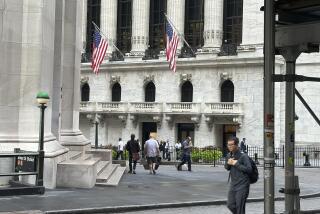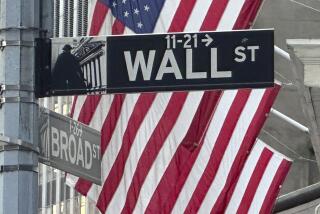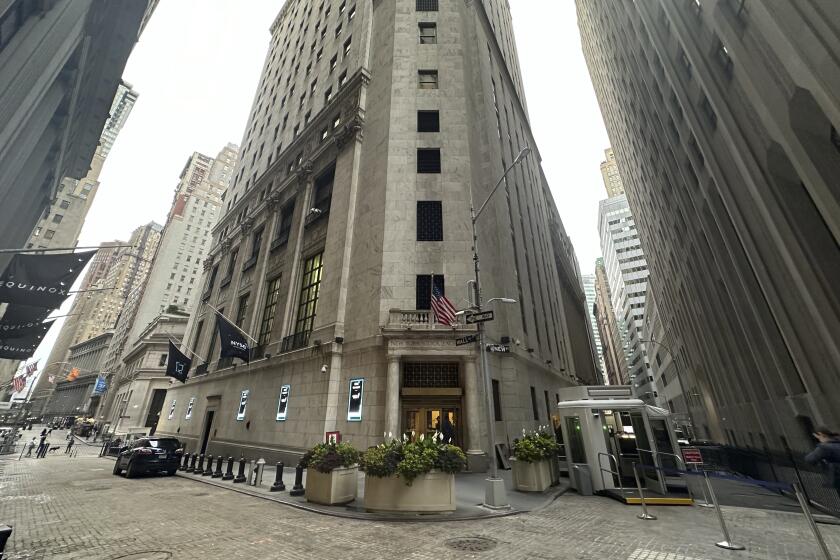Wall Street slides after Treasury yields climb back above 4% and oil rises

U.S. stocks slid Monday after Treasury yields hit their highest levels since the summer and oil prices continued to climb.
The Standard & Poor’s 500 index dropped 1%, though it’s still close to its all-time high set a week earlier. The Dow Jones industrial average fell 0.9%, coming off its own record, while the Nasdaq composite sank 1.2%.
It’s a stall for U.S. stocks after they rallied to records on relief that interest rates are finally heading back down now that the Federal Reserve has widened its focus to include keeping the economy humming instead of just fighting high inflation. Friday’s blowout report on U.S. jobs growth raised optimism about the economy and hopes that the Fed can pull off a perfect landing for it.
The stronger-than-expected hiring pushed Goldman Sachs economist David Mericle to say he now sees just a 15% chance of a recession, down from 20%.
But Friday’s jobs report was so strong that it also forced traders to ratchet back forecasts for how much the Fed will ultimately cut interest rates. That in turn has sent Treasury yields higher, and the 10-year yield is back above 4% for the first time since August.
The two-year Treasury yield also briefly climbed back above 4% Monday, up from 3.50% a couple of weeks ago. That’s a sizable move for the bond market, and it can drag on prices for stocks and all kinds of other investments.
When Treasury bonds, which are seen as the safest possible investments, are paying more in interest, investors become less inclined to pay very high prices for stocks and other things that carry bigger risk of losing money.
Monday’s sharpest losses hit stocks of utility companies. These kinds of stocks tend to pay big dividends, which means they can see potential buyers leave when bonds are paying more in interest.
Utilities fell 2.3% for the sharpest loss among the 11 sectors that make up the S&P 500 index, including a 5.2% drop for Vistra and a 3.3% slide for Duke Energy.
It’s more difficult to look attractive to investors seeking income when a 10-year Treasury is paying a 4.02% yield, up from 3.97% late Friday and from 3.62% three weeks ago.
The yield on the two-year Treasury, which more closely tracks expectations for the Fed, jumped more on Monday. It rose to 3.99% from 3.92% late Friday.
Treasury yields may also be feeling upward push from the recent jump in oil prices. Crude prices have been spurting higher on worries that worsening tensions in the Middle East could ultimately lead to disruptions in the flow of oil.
Brent crude, the international standard, rose 3.7% Monday to settle at $80.93 per barrel. Benchmark U.S. crude, meanwhile, also gained 3.7%, to $77.14 per barrel.
Stocks that are seen as the most expensive can feel the most downward pressure from higher Treasury yields, and the spotlight has been on Big Tech stocks. They drove the majority of the S&P 500’s returns in recent years and soared to heights that critics called overdone.
Apple fell 2.3%, Amazon dropped 3% and Alphabet sank 2.4% to act as some of Monday’s heaviest weights on the S&P 500.
An exception was Nvidia, which rose 2.3%. It rode another upswell in excitement about artificial intelligence technology after Super Micro Computer soared 15.8% after saying it recently shipped more than 100,000 graphics processing units with liquid cooling.
If Treasury yields keep rising, companies will probably need to deliver bigger profits to drive their stock prices much higher, and this week marks the start of the latest corporate earnings reporting season.
Analysts say earnings per share grew 4.2% during the summer for S&P 500 companies from a year earlier, led by technology and healthcare companies, according to FactSet. If those analysts are correct, it would be a fifth straight quarter of growth.
PepsiCo will report its latest quarterly results Tuesday, but the momentum will really pick up Friday. That’s when JPMorgan Chase, Wells Fargo and Bank of New York Mellon will report, as banks dominate the early days of reporting season.
Bank stocks were mixed Monday, with a few adding to gains from Friday when the jobs report raised hopes that customers will borrow more money and make good on the loans.
Elsewhere on Wall Street, winemaker Duckhorn Portfolio more than doubled after a private equity firm said it would buy the company for roughly $1.95 billion in cash.
All told, the S&P fell 55.13 points to 5,695.94. The Dow dropped 398.51 points to 41,954.24, and the Nasdaq sank 213.95 points to 17,923.90.
In stock markets abroad, European indexes were mixed after bigger gains in Asia.
Japan’s Nikkei 225 index rose 1.8% after the value of the yen sank against the U.S. dollar. A weaker yen can boost profits for Japanese exporters.
Stock markets in mainland China will reopen on Tuesday from a weeklong holiday, and the government said it plans to explain details of plans for economic stimulus at a morning news conference in Beijing.
Choe writes for the Associated Press. AP writer Elaine Kurtenbach contributed to this report.
More to Read
Inside the business of entertainment
The Wide Shot brings you news, analysis and insights on everything from streaming wars to production — and what it all means for the future.
You may occasionally receive promotional content from the Los Angeles Times.










